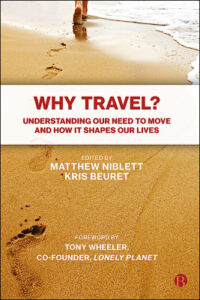Over 2 million Muslims gather in Mecca for Hajj
5th October 2013
This week over 2 million Muslims have gathered to take part in the rituals of Hajj – the annual pilgrimage to sacred sites in Mecca, Saudi Arabia. Hajj is one of the five pillars of Islam and considered to be a great act of worship which should be undertaken once in their lifetime by all Muslims who are physically and financially able to do so. Pilgrims travel to Mecca during the last month of the Islamic calendar to undertake the five-day ritual journey, echoing the pilgrimage made by Muhammad in the 7th century BC and, Muslims believe, pilgrimage practices that stretch back thousands of years to the time of Abraham. Pilgrimage has been an important act of worship in religions worldwide for thousands of years, from Hindu journeys to the sacred Ganges to Ancient Greek pilgrimage to Delphi and Olympia; and in modern times there are an estimated 155 million pilgrimages made every year.¹
How can we explain the seemingly universal religious importance attached to travel? Enduring the hardships of such journeys is seen as a form of worship. But religions also stress the transformative power of the journey on the spiritual being of the pilgrim. Muslims believe in the power of Hajj to promote brotherhood amongst Muslims, with equality and harmony at the heart of the pilgrimage experience. This is supported by academic research which reports that Hajjis express increased belief in peace, equality and harmony amongst Islamic sects, ethnic groups and non-Muslims.² Civil Rights Leader Malcolm X claimed that “on this pilgrimage, what I have seen, and experienced, has forced me to rearrange much of my thought patterns previously held [about harmony between different races].”³
The Hajj this year has controversially seen a huge rise in the number of ‘selfies’ taken by pilgrims at the sacred sites; a trend condemned by many religious leaders and other pilgrims as distracting from the real spirit of Hajj. This seemingly most-modern of turns in fact reflects age-old concerns about pilgrims behaving in a less than ‘spiritual’ way: travelling to see the sights or to gain social prestige. In the fifteenth century, Thomas à Kempis criticised sightseeing by pilgrims, complaining that “one seldom hears any amendment of life results.”
Despite such misgivings about the lack of value of such ‘touristy’ behaviour, many non-religious travellers also talk of the transformative power of travel. Many find that the novelty and challenge of a new place, and the process of travelling there, removes us from our ‘comfort zone’ and engages a new way of thinking about ourselves and the world around us (what author Tony Hiss calls ‘Deep Travel’). Travel is clearly about a great deal more than getting from A to B. Understanding our motivations for travel are essential if we are to provide worthwhile travel experiences in an ever more populated and environmentally-constrained world. The ITC’s Why Travel? Project examines the fundamental motivations underlying human travel looking back to our evolutionary origins, throughout history and into the future, combining insights from biology, psychology, anthropology, literature, philosophy and more. You can follow up on what we’ve found out at www.whytravel.org
1. Alliance of Religions and Conservation, Pilgrimage Statistics 2012, http://www.arcworld.org/downloads/ARC%20pilgrimage%20statistics%20155m%2011-12-19.pdf
2. Clingingsmith, D., Khwaja, A. I., Kremer, M. (2009) Estimating the Impact of The Hajj: Religion and Tolerance in Islam’s Global Gathering The Quarterly Journal of Economics (2009) 124 (3): 1133-1170 doi:10.1162/qjec.2009.124.3.1133
3. Malcom X, Letter from Mecca, April 1964 http://www.malcolm-x.org/docs/let_mecca.htm


